
Orion Models (NJCB) Union Pacific Coal Turbine
As HO model trains go, this thing is HUGE! But alas, it was a temporary fling.
This model ended up being a stop gap during my search for what I considered the ultimate prize, the Overland Models Union Pacific Coal Turbine, which I was able to acquire after a long search. The model shown here is from New Jersey Custom Brass, and while it’s not as detailed or accurate as OMI’s version, it’s still an impressive set. This particular model is in great shape, never run, and the box and internal foam packaging is in great shape considering the age. The model consists of the lead Alco unit, center turbine unit, and coal tender.
The Union Pacific Railroad experimented with a number of different turbine locomotive types. In the late 1930’s, UP tested two coal-fired steam turbine locomotives simply named units 1 & 2. They were put into service for about a year and ultimately declared a failure, primarily due to reliability issues.
In the 1950’s, UP once again considered a turbine design, but this time the turbine was fired with a low-grade oil called “Bunker C” . This low grade oil was typically regarded as a waste product, produced as a by-product of oil refining. The one advantage was that it was cheap. UP was pleased with the performance of their oil burning turbines and put them into service. They remained in service for approximately ten years at which time the plastics industry found use for Bunker C oil, and the price skyrocketed, making the turbine locomotives no longer economically viable.
In 1961, UP experimented with this unique, three-unit coal-fired turbine. The lead unit was a modified Alco PA-2. The second unit was built upon the chassis a Great Northern RR W-1 electric locomotive. It was modified to house the turbine itself. The third unit was an old steam locomotive coal tender that was modified for use with the coal turbine. The way the whole thing worked was coal in the tender was pulverized into dust by a coal crusher built into the tender. The coal dust was then mixed with water and pumped to the second unit, where the coal dust was then separated from the water and fed to the turbine. The turbine spun a generator which powered the traction motors in the first unit, producing 5,000hp. The first unit also retained it’s original 2000hp diesel engine, for a combined output of around 7,000hp.
Detail on the model is very good, but a few things puzzle me. In all the photographs I’ve seen of #80, this model doesn’t seem to reflect the real #80. One of the nice “extras” for this model was the inclusion of a b/w photo of the real thing. This helps highlight some of the differences:
Most differences appear to me to be on the second unit. While the model includes nice mesh screening over the various openings, the screening is on the inside of the unit, whereas the real thing has most of the screening on the outside. Also, the lead unit on the model has grills near the roofline that are simply molded into the structure, whereas the real thing has grills that you can see through into the inside structure.
A friend over at my model railroad club suggest that because UP experimented heavily with this unit, and was constantly changing the configuration and they worked through issues, that the model may represent some phase in the experimentation process that changed things up. I still can’t find the photographic evidence to support this model’s config, but it’s a possibility.
Another producer of fine brass model trains is Overland Models. They produced this same model, and to me, it resembles the photographs I’ve seen much more accurately. Of course it’s more than triple the price of the NJCB. I suppose you get what you pay for, but given the level of detail in this NJCB model, it doesn’t feel like they skimped; more like they just got it wrong. But as my club buddy said, it could be one of many variations.
These photos illustrate what a truly detailed model this is. What is needed to make it complete is the addition of lighting and window glazing. There may be work needed on the inside as well since only one truck on the lead and one truck on the middle unit is powered. The electric motors are a bit undersized as well. Add to that the installation of a DCC decoder, most likely with sound, and I’ve got my work cut out for me.
Update: I’ve really been on the hunt for Overland Model’s version of the #80 Coal Turbine and was able to track one down from a used brass trains dealer. The NJCB/Orion model has since been sold. You can read about the OMI #80, its conversion to DCC, and see a video in this post: http://www.rcgrabbag.com/archives/overland-models-up-three-unit-coal-turbine-80
[wordbay]ho turbine locomotive[/wordbay]
Originally posted 2014-06-21 20:16:20.
You may also like
6 comments
Leave a Reply
Archives
- April 2025
- March 2025
- February 2025
- January 2025
- December 2024
- November 2024
- October 2024
- September 2024
- August 2024
- July 2024
- June 2024
- May 2024
- April 2024
- March 2024
- February 2024
- January 2024
- November 2023
- October 2023
- September 2023
- August 2023
- July 2023
- April 2023
- March 2023
- September 2022
- September 2013
- August 2013
- March 2013
- September 2012
- June 2012
- December 2011
- August 2011
- July 2011
- May 2011
- March 2011
- January 2011
- December 2010
- November 2010
- September 2010
- August 2010
- July 2010
- June 2010
- April 2010
- March 2010
- February 2010
- January 2010
- December 2009
- November 2009
- October 2009
- September 2009
- August 2009
- July 2009
- June 2009
- May 2009
- April 2009
- March 2009
- February 2009
- January 2009
- December 2008
- November 2008
- October 2008
- September 2008
- August 2008
- July 2008
- June 2008
- May 2008
- April 2008
- March 2008
- February 2008
- January 2008
- December 2007
- November 2007
- October 2007
- September 2007

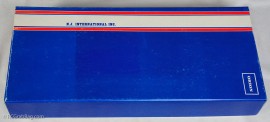
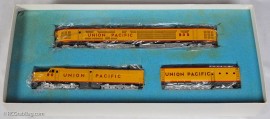


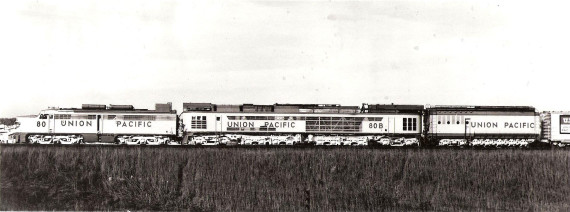


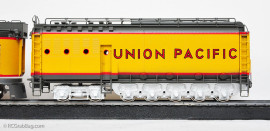
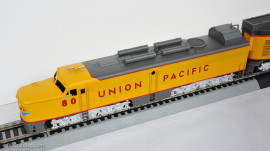
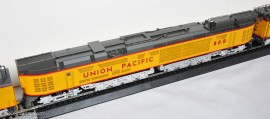
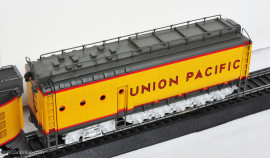
I have the same model on my model RR. Your model RR friend is kinda correct but so are you…
This model is a very nice model but the company who made it also sort of skimped on the detailing. I am currently working on a Plastic Alco PA to make the lead unit to be super detailed to make a much more accurate leader (with see through grills etc.). When you see the great job they did on the Turbine and tender it seems as though the PA was an afterthought but you also gotta realize this model was made about 33 years ago (I saw it advertised in a 1979 RR Model Craftsman). I’m glad to have mine no matter what!!! 🙂
I was thinking of doing the same thing with the lead unit, that is, get a more detailed plastic or brass unit and do some mods. There’s a lot of work to be done to get it in a finished state, and converted to DCC.
Still working on my Turbine but that project is on the back burner for now! I compared a plastic Athearn ALCO PA with the Brass one and it is much better and seems truer to the proto-type (but it too will need new grills as the ones molded onto the plastic one are of the as built ALCO Grills).
To modify a plastic ALCO PA you’ll need to do the following:
1) Change the Grills: UP used after-market, EMD style FARR Stainless steel grills typically used on F and E units (these grills are sold seperatly in HO, I have a set, by high-ball I believe).
2) Add Air Resevoirs (you make have to make these because I don’t know of any detail parts on the market that match). I would not, I repeat not remove and use the air resevoirs from the roof of the brass model to use on the plastic A-unit as it would hurt the collectability of your brass model.
3) Add the extra fuel tank to the rear of the unit, this fuel tank is the box-like structure that protrudes from the rear roof of the A-unit. This fuel tank could be built from scratch out of styrene.
4) Repaint and/or reletter (Micro-scale makes a set of decals specific to the Coal Turbine)
Me, I am go a few steps further and after getting the new “A-unit” give it (the A-unit) DCC/sound (ALCO 244-primemover sound), The B-unit may have a gear removed from the powered truck to make it free rolling , if I take that route making it free rolling (the gear or gears will be saved w/ the origional A-unit for collectabuility issues), I will also remove the power leads to the motor, and I will end up using them to run a turbine sound decoder off of. I may decide due to the noise of the Turbine to forego a sound decoder in the PA….
also, despite collectabuility issues, I may lightly weather the grills on the B-unit to make the grills stand out a bit better.
I figure the B-unit will not need to be powered and the Plastic PA plus any “protection power” coupled behind (due to the experimental nature of the prototype, UP almost always ran it with Protection power as a rule, usually 2-3 GP9 or GP9B’s).
As luck would have it, I tracked down and Overland Models Coal Turbine #80, factory painted. Posted pics and article here: http://www.rcgrabbag.com/archives/overland-models-up-three-unit-coal-turbine-80
Well…. I am glad you recieved your holy grail and got the Overland one!!!! I still want one but will probably never will get one 🙁 . Such is life. I have never completed the mods to my Coal Turbine but I will someday (I have moved 2 x since 2012 and have had 2 kids so I don’t have the time).
-Willie